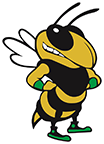Code of Conduct/ FCSC Elementary Student Handbook
The learning environment is an important part of the educational process. To help facilitate effective instruction, an orderly environment must be maintained. Students are expected to adhere to a code of good behavior not only for their own benefit, but also for the benefit of others as well. Students should conduct themselves in a manner that will be a credit to their school and ensure the safety of all students, personnel, parents, and patrons. The Fayette County School Corporation’s “Student Code of Conduct” is the basis for the expectations of behavior of students.
Please click here for FCSC Full Code of Conduct.
The plan for student behavior is intended to provide general guidelines by which students are to conduct themselves. This plan includes specific violations/consequences listed below, but does not limit the disciplinary consequences that may be imposed by the administration. The primary goal of the school is to provide students with an education that will allow them the opportunity to be successful in life. In order to achieve this goal, there must be order and discipline in the school. Good behavior should be recognized and rewarded, and unacceptable behavior should have consequences to ensure that a few students do not interfere with the rights of others and with the normal functions of the school.
